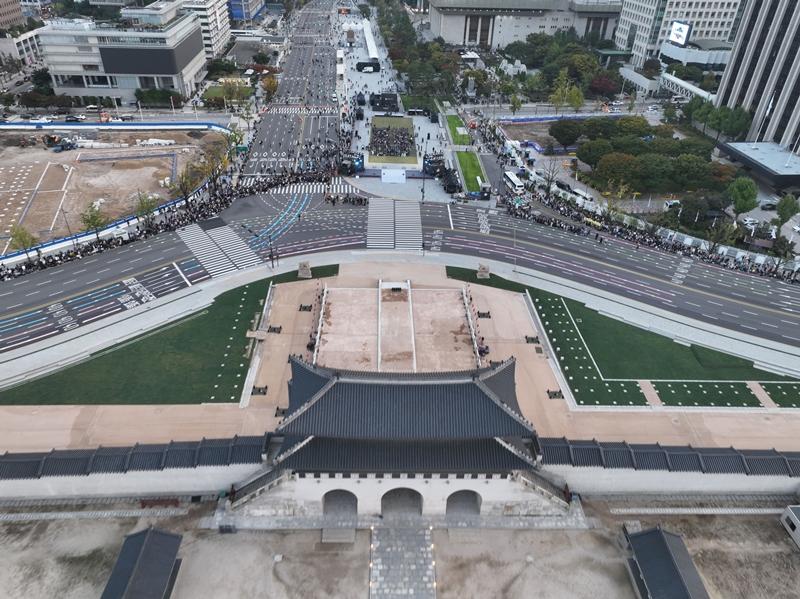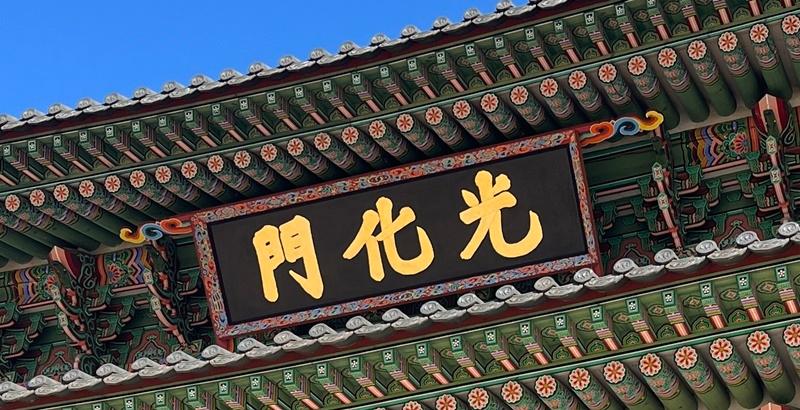
A woldae (ceremonial elevated stage) on the evening of Oct. 15 is unveiled to the public for the first time in a century at a ceremony to mark its restoration. It was demolished in 1923 to make way for a tram line installed by the Japanese colonial government. (Yonhap News)
By Yoon Seungjin
Video = Kim Sunjoo and Lee Jun Young
A woldae (elevated ceremonial stage) in front of Gwanghwamun Gate in downtown Seoul was unveiled on Oct. 15 after being restored to its original state from about a century ago.
The Cultural Heritage Administration (CHA) held a ceremony at Gwanghwamun Square in front of Gyeongbokgung Palace to mark the completion of this work and the gate's restored signboard.
A high and wide platform used for ceremonies, the woldae was built in 1866 for use in major royal events as a window of communication between the king and the people. It was destroyed in 1923 during Japanese occupation of the Korean Peninsula to make way for a tramway track.
The restored signboard unveiled alongside the woldae features Chinese script in gold on a black background written by Im Tae-young, a mid-ranking Joseon official and training officer at the time of Gyeongbokgung's reconstruction under King Gojong, the 26th king of the Joseon Dynasty.

The restored signboard of Gyeongbukgung Palace's Gwanghwamun Gate unveiled on Oct. 15 shows gold letters on a black background, a design based on documents and archival photos from the time of the palace's reconstruction. (Cultural Heritage Administration)
Launching the restoration of the woldae and the signboard in 2006, CHA started in September 2021 to promote the restoration design for the platform and conducted excavations to confirm the scale and structure. It completed work this month.
"Though quite different from the Gwanghwamun we've seen for a long time, this is the full appearance of Gwanghwamun," CHA Administrator Choi Eung-Chon said at the ceremony, "I hope that the symbolism and meaning of Gwanghwamun's restoration are properly conveyed to the public as well as the efforts made over that time."
"The woldae was not only a pathway for kings, but also a space for communicating with the people," Minister of Culture, Sports and Tourism Yu In Chon added, "I hope that the Republic of Korea plays a role in removing gaps through communication.”
scf2979@korea.kr